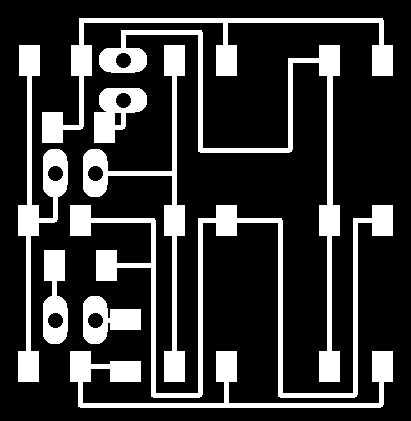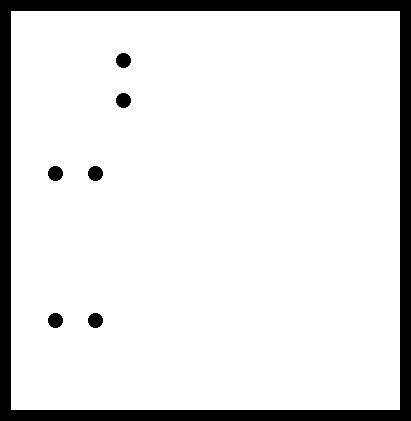Final project
Project Proposal
Basically my project idea consists in make a LED matrix that light it on when receive a Laser pointer in it correspondent light sensor. Each LED must have a sensor to it works. The big picture of that would be a screen board which you could write with light, and each LED would basicaly be a "pixel".
The possibilites that I see to this project is to make something which people can interact each other. It will be also a nice opportunity to learn more about electronics, I would use the Laser cutter or CNC machines to build the box and make PCBs to the circuits.
The project is made to be some interactive small LED arrays that will interact with the user by a Laser pointer. Small nodes will compose it and when they are put together can be used as a small screen, and the user can use it as a board to write or drawn, where instead of using a pen will be using a laser pointer.
Bill of Materials
- a bunch of LEDs (red or green).
- FR1 boards for PCB.
- Laser pointers.
- resistors (for the LEDs and maybe some 0ohm resistors to jump traces at the board).
- AVR microcontroller (probably Attiny84).
- Pin Headers.
- 20MHz resonators.
- 1uF capacitor.
- FTDI cables to communicate to the computer.
- Translucent white acrylic boards.
- PLA filaments for the cover boxes (if 3D printed).
- Wood for the cover boxes (if laser cutted).
- Hot glue.
Design and laser cutting
My design is pretty simple, I used inkscape to make it and cut using the laser cutter. I kind of designed the distance between the LEDs using also the inkscape. I wanted the nodes to be tiled, so the can become equally spaced from each other, and really looks like a screen when put together.
You can get further information on my design on Project Development page
You can get the files here:design.rar
Electronic Board
For the electronic board, big part of the development are on the input devices, output devices, and networking and communications assignments. For more detailed information you can go to these pages.
Basically I designed using eagle, making a 3x3 LEDs array as showed in Week 15 here.
I put the holes in the same image of the board cutout, so you mill it as well. Here is how the files prepared for milling looks like:




See that the bottom files to mill are horizontal flipped compared to the print screen from eagle showed before.
The files of electronics design and production can be found here: electronics.rar
Programming
Most of my microcontroller programming was made on the input devices, output devices, networking and serial communication and interface application programming assignments.
You can find the source files here: programming.rar
Final Result
To make it works in the way I wanted, I needed to make more LED nodes to have a screen big enough to make some simple drawn using the laser pointer on it.
I made 9 nodes (3x3) and as shown before on Interface Application Programming week, and connected them together. I also networked them as shown in the Networking and Communications week
Here is how the final prototype looks like:


And here the video and slide presentation of the project

Final Dissemination of the Project
Lasernodes is a Open Source electronic project design designed and developed by Siron Cesar Pacheco Pereira during Fab Academy 2016 Classes, at AS220, Providence-RI, USA. It is conceived as a electronic arts product that will allow the user to create a custom LED screen that you can write or drawn just using a Laser pointer as a pen. The project can be scalable to make screens as big as 127 nodes. Since the Lasernod is all available on the Fab Academy website the need for intellectual property or copyright is not at the moment existent.
Therfore, the project will be covered with a Fab Lab license, under the name LaserNodes. The income of this project will come from selling the small nodes as well as the workshops to create the LaserNodes at Fab Labs.
By now it is only a prototype, so the next steps would be to manufacture the electronic boards to get more reliability on the product. After that Kikstarter is a natural progression for LaserNodes to be able to build it in scale.
